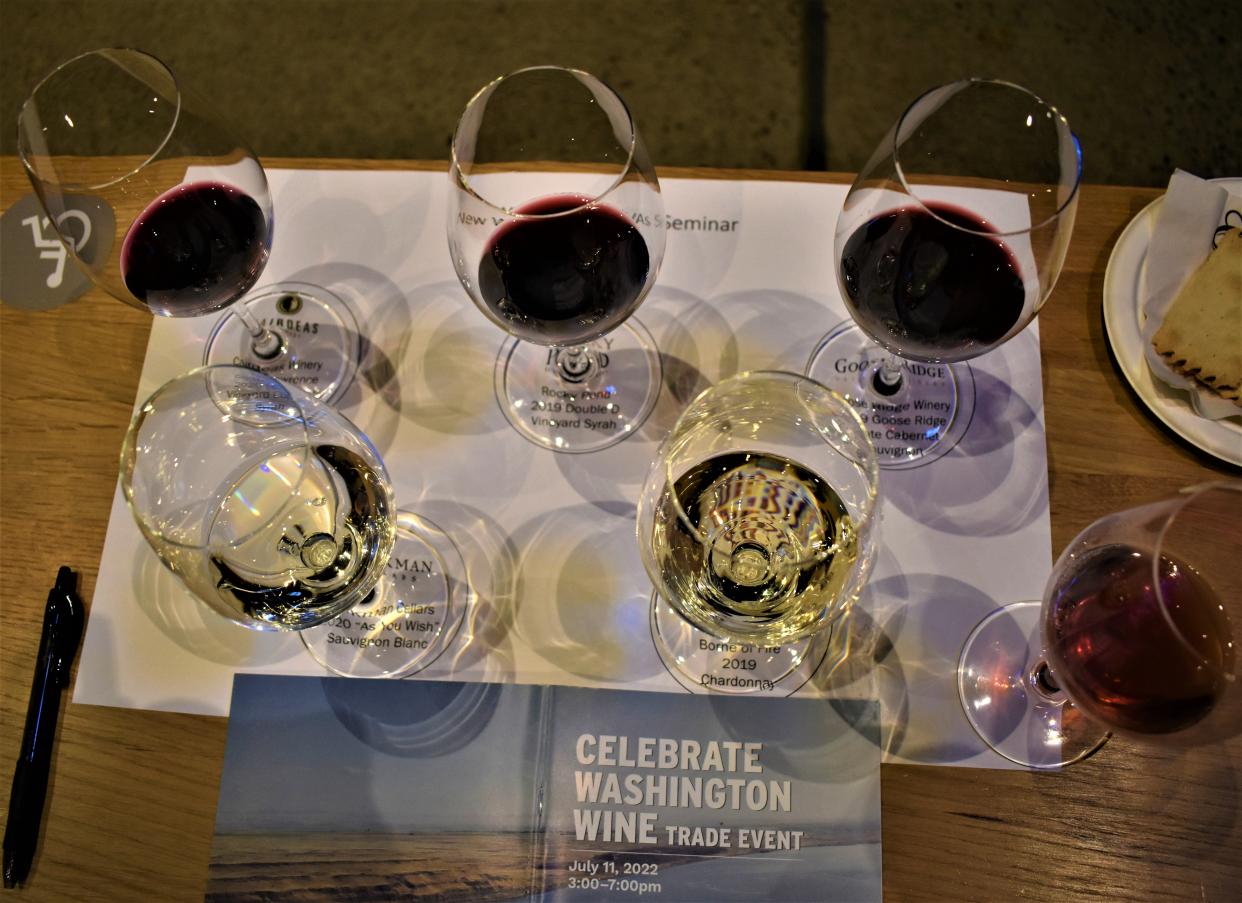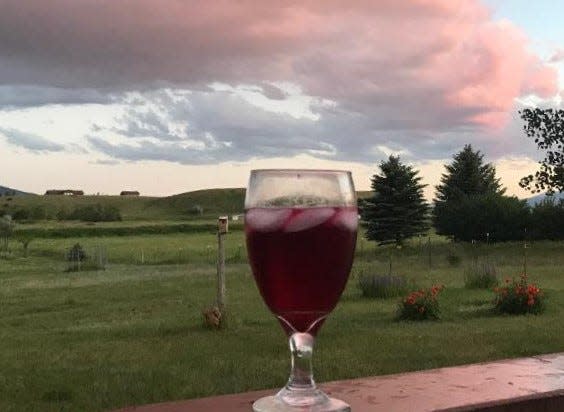Chillable reds, rosés and whites for all your summer plans

Those sunny days and warm nights of summer are upon us. Finally! Outdoor gatherings at the picnic table under a big shady tree, on a sandy beach or after a nice, long bike ride are favorite summer pastimes that may require a glass of something cold.
Anything cold. Like rosé, white wine or chilled red wine. Chillable red is becoming a thing. I came across the term not too long ago and had to look it up since the only chillable red I was aware of is Sangria. Or maybe even on a hot summer day. you might put a red in the ice bucket for five minutes or so.
So I Googled it. Turns out it’s kinda a new spin on wine to attract the younger generations. And right across my screen flashed the label for a big box of “chillable red." Further reading from one website mentioned it was made from Chardonnay! And that this American wine came from a region called Burgundy. I’m sure it was a mistake, but it was good for a chuckle.
Chillable reds didn’t sound like my thing. But I did recall a while back there was this thing called wine coolers, which is a blend of red or white wine, a variety of fruit juices and sparkling water — very popular in the 1980s. I did not scoff at them, I thought of them as wine with training wheels.
Chillable reds could certainly be another type of wine with training wheels to be added to the chilled beverage options. Chillable reds would be lighter-bodied with hopefully a decent amount of acidity and fruit. Red grapes used for chillable reds generally have thinner skins than your typical Cabernet or Syrah.
Think of all the rosés you’ve tasted. A rosé from Provence? The thinned-skinned Cinsault. A rosé from Spain? Tempranillo. A rosé of Sangiovese? Italy or better yet Barnard Griffin Rosé of Sangiovese. A sparkling Brut Rosé? Pinot Noir.
Cinsault’s thin skin has delicate tannins that make it ideal for chilling, Gamay, perhaps best known for its use in Beaujolais Nouveau, would take to chilling in an easy-drinking way. Pinot Noir has a thin skin and there are a number of rosés coming out of Oregon to try.
Rosés and whites
Summer barbecues and picnics necessitate chilled beverages. Rosés are a natural for these occasions. As are Rieslings to pair with summer fruits and cheeses. Chilled Vinho Verde and Sauvignon Blanc are winning choices for light, crisp partners to seafood and salads.
It was on the hottest day so far this year that Chateau Ste Michelle and the Washington Wine Commission chose to host a tasting to Celebrate Washington Wine. It was outside, and did I mention it was very hot? Right. Something cold was in order: whites, rosés or even water. But not red.
I tasted whites while hiding under the shade of an umbrella with fellow tasters. Alexandria Nicole had a delightful traditional white Rhône that was a blend of Roussanne, Marsanne and Viognier. Highly recommend this beauty.
Other recommendations for Washington whites include Maryhill’s Viognier, Succession 2021 Wahluke Slope Chenin, Alta Cellars Albariño, Elsom Cellars Dutchman Vineyards Albariño, Ambassador Wines 2019 Boushey Vineyards Sauvignon Blanc, Sparkman White Bluffs Sauvignon Blanc, Fielding Hills Old Vines Chenin, and Oomrang 2019 Puget Sound Siegerrebe.
There were plenty of chilled rosés made frequently with Grenache predominant blend but there was one delicious and unusual one from Alexandria Nicole: a non-vintage semi-sparkling rosé that was a perfect blend of Cab and Orange Muscat. Try it. You’ll love it.
Cairdeas Winery’s rosé is a blend of Syrah and Grenache aged in stainless, while Elsom Cellars' rosé was a blend of Cinsault and Syrah. Guardian Cellars rosé was also made with Rhône grapes, Grenache Mourvedre and Syrah. And Succession Wines’ rosé was a blend of Syrah and Grenache. I was amazed when tasting Latta Wine and Lauren Ashton Cellars rosés. Both were Grenache Mourvedre blends but were so different in color and flavors — in a very good way.
Sigillo Cellars’ Wahluke Rosebud Tempranillo was mightily impressive. They also make a straight Cinsault but unfortunately didn’t get to taste that as they’re sold out.
Toward the end it was still hot but I was drawn to a couple of reds. The first was Beckstone Wine Cabernet. Very nicely balanced and I would highly recommend this newcomer.
Another would be Guardian Cellars Gun Metal Red. A blend of chiefly Cab with Merlot Cab Franc and Petite Verdot from the venerable Connor Lee Vineyard. And Cairdeas Winery’s Lawrence Vineyard Royal Slope Syrah was fermented and aged in concrete eggs.
While tasting these delicious reds, I thought about a friend who once asked me if it was OK to put ice cubes in her wine. Wine not? If that’s how you prefer it. While I didn’t try it there, I did think about it and just might experiment if this heat wave continues.

How to chill wine:
Chill the bottle until it is as cold as other bottles in the fridge. Take it out to warm up a bit about 30 minutes before serving.
Put the bottle in a bucket of ice and water to chill the wine faster.
If you’re on the go, chill a can or two of wine. It’s faster, lighter and less likely to break while backpacking or bike trip.
Cheers to letting the good times flow.
Mary Earl has been educating Kitsap wine lovers for a couple of decades, is a longtime member of the West Sound Brew Club and can pair a beer or wine dinner in a flash. She volunteers for the Clear Creek Trail and is a ongtime supporter of Silverdale.
This article originally appeared on Kitsap Sun: Chillable reds, rosés and whites for all your summer plans

